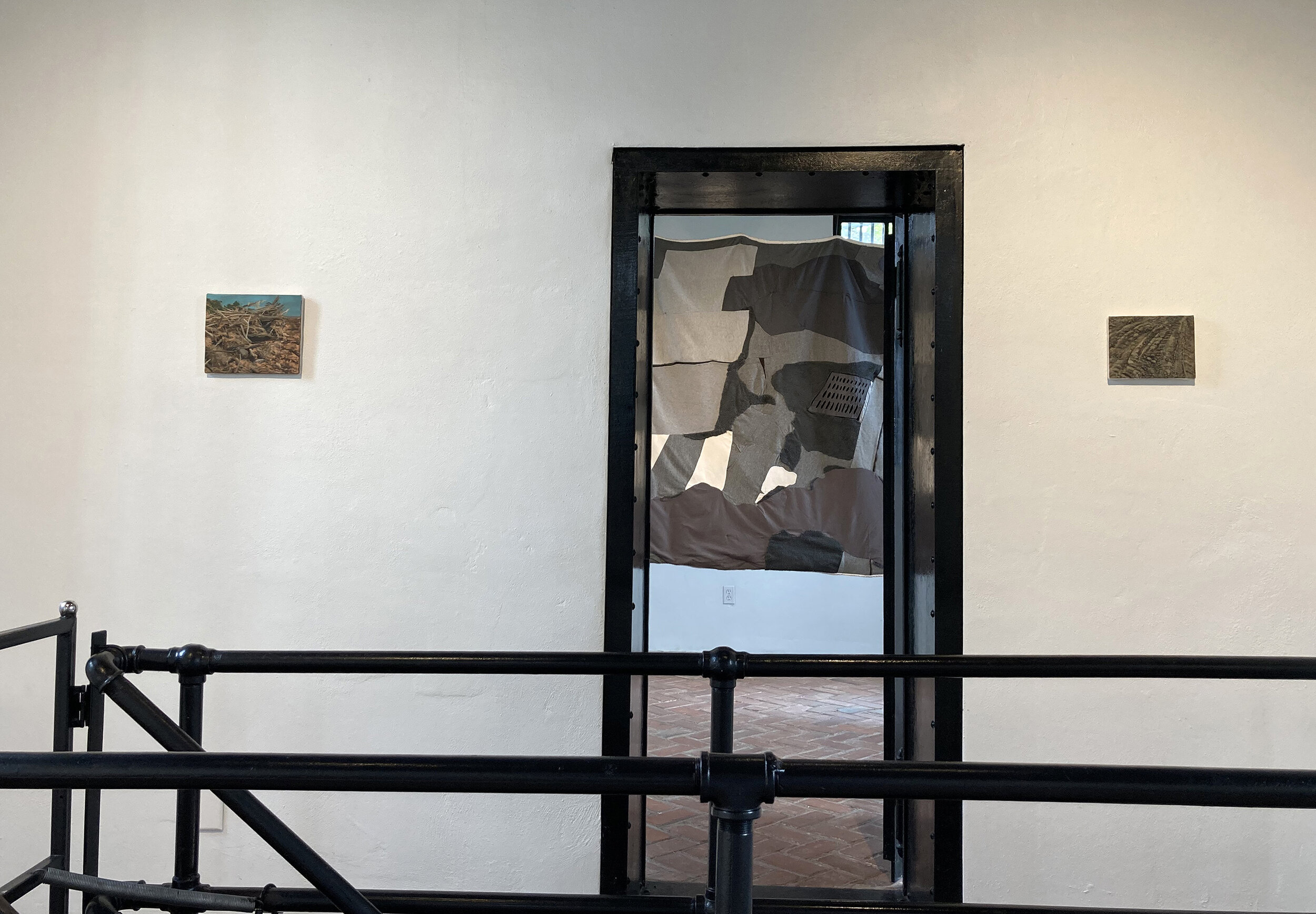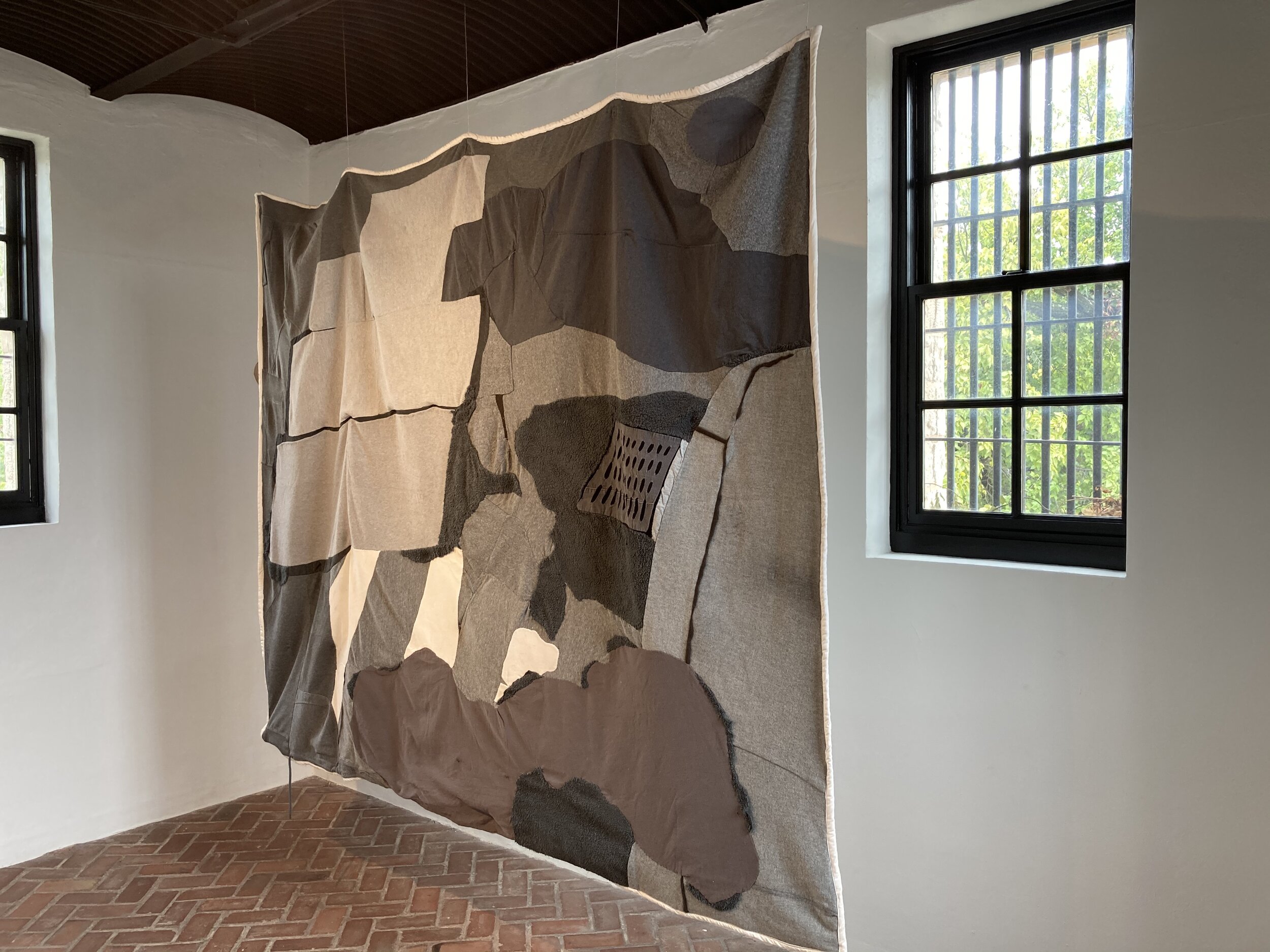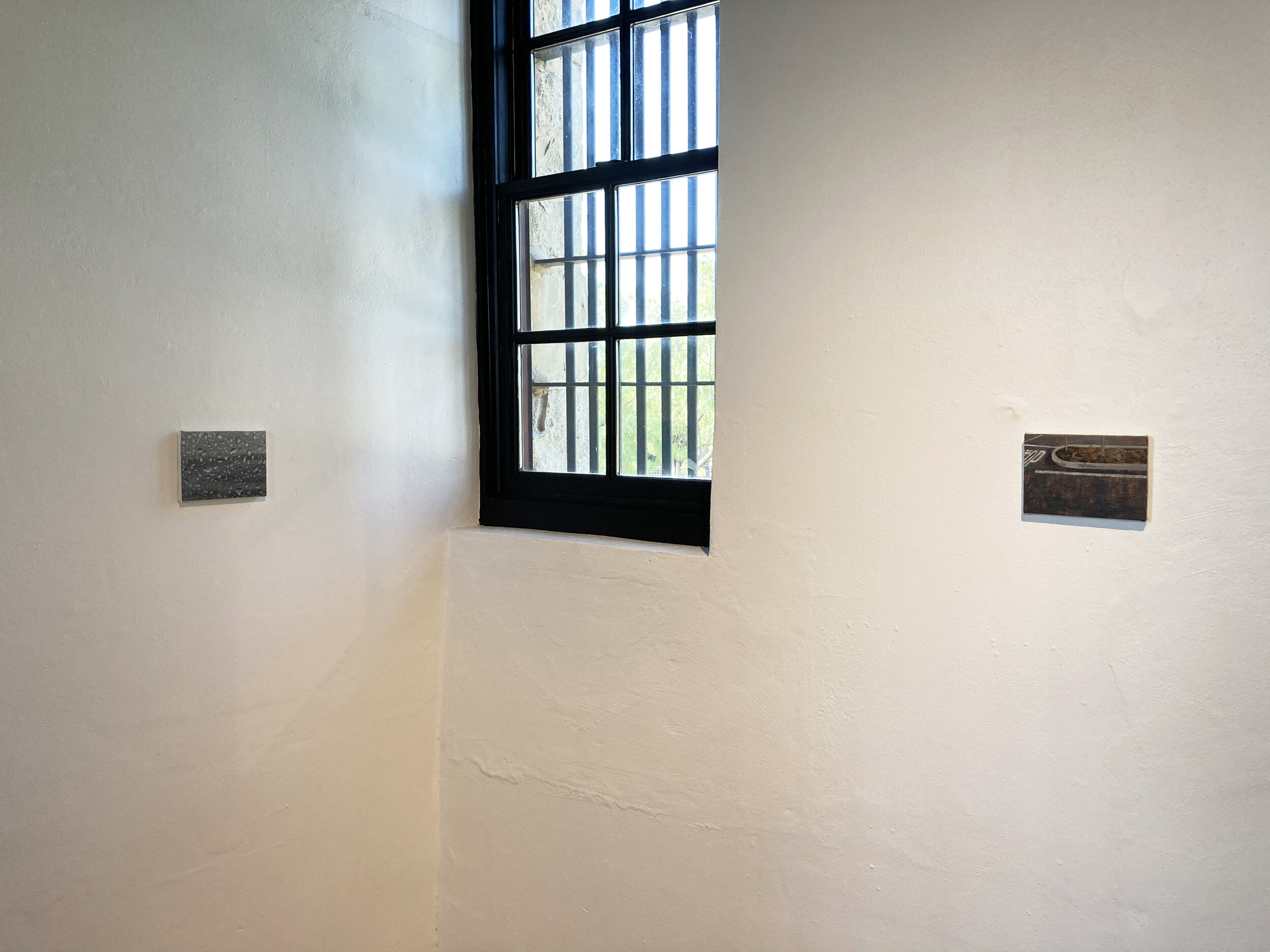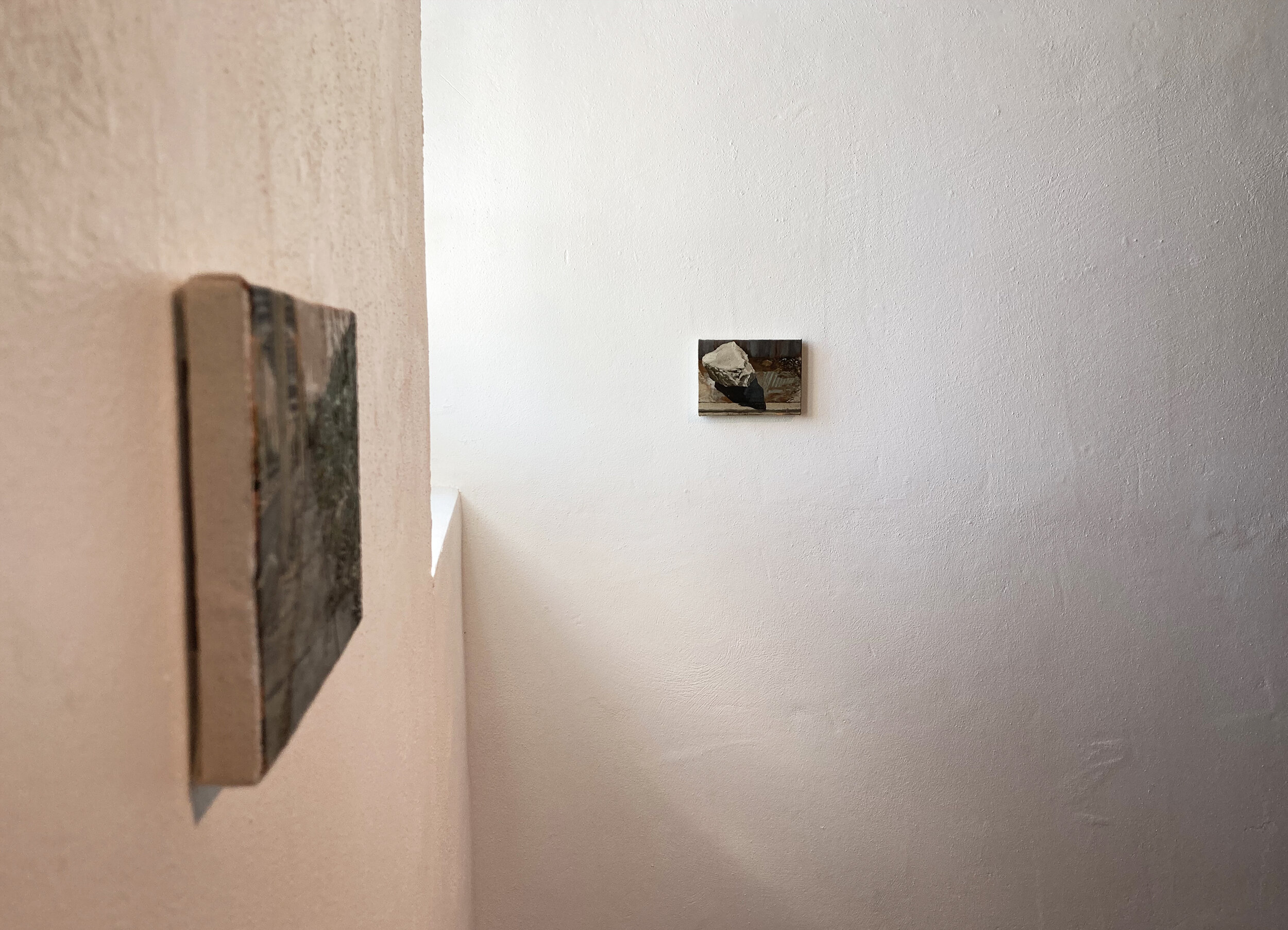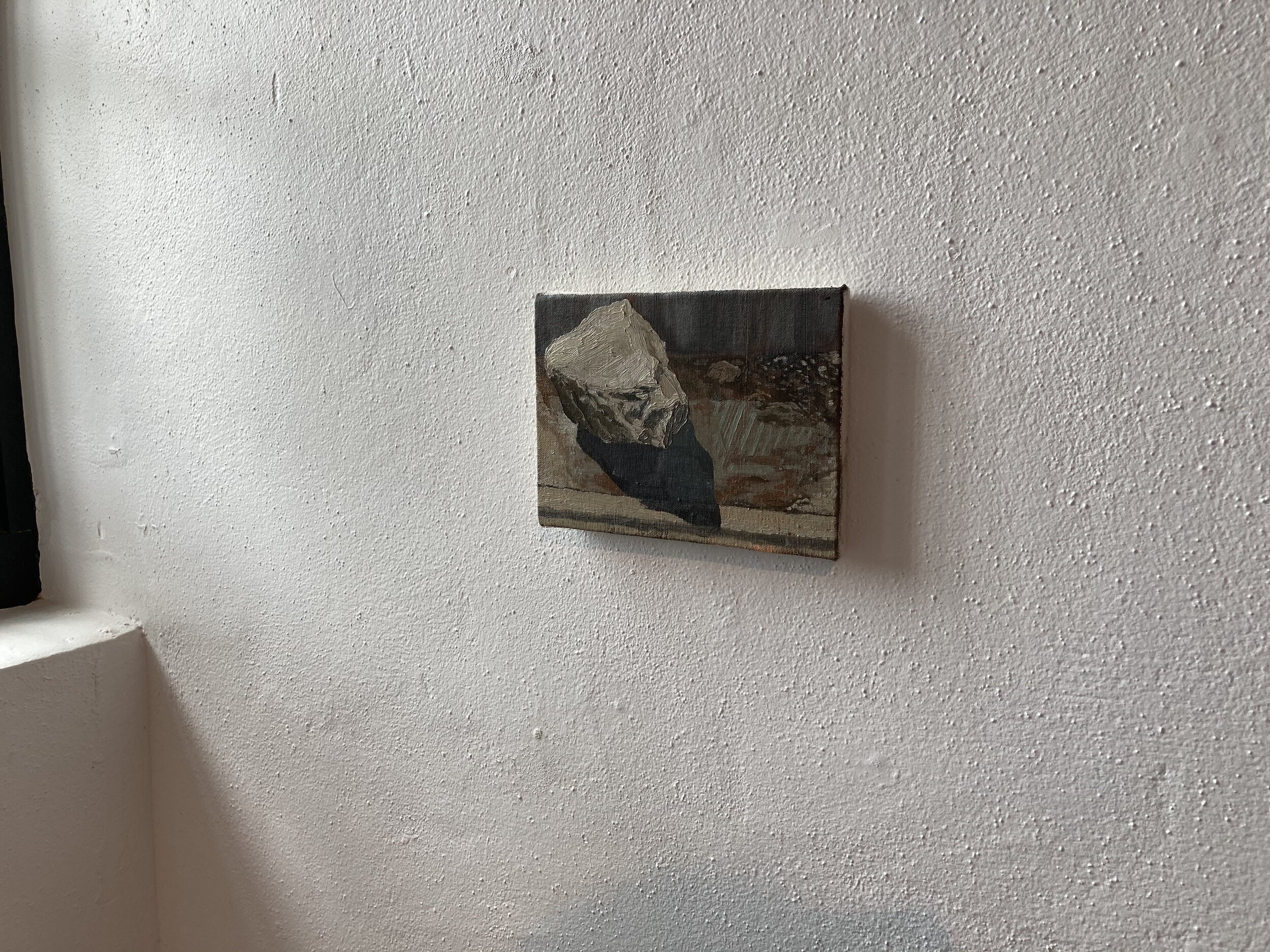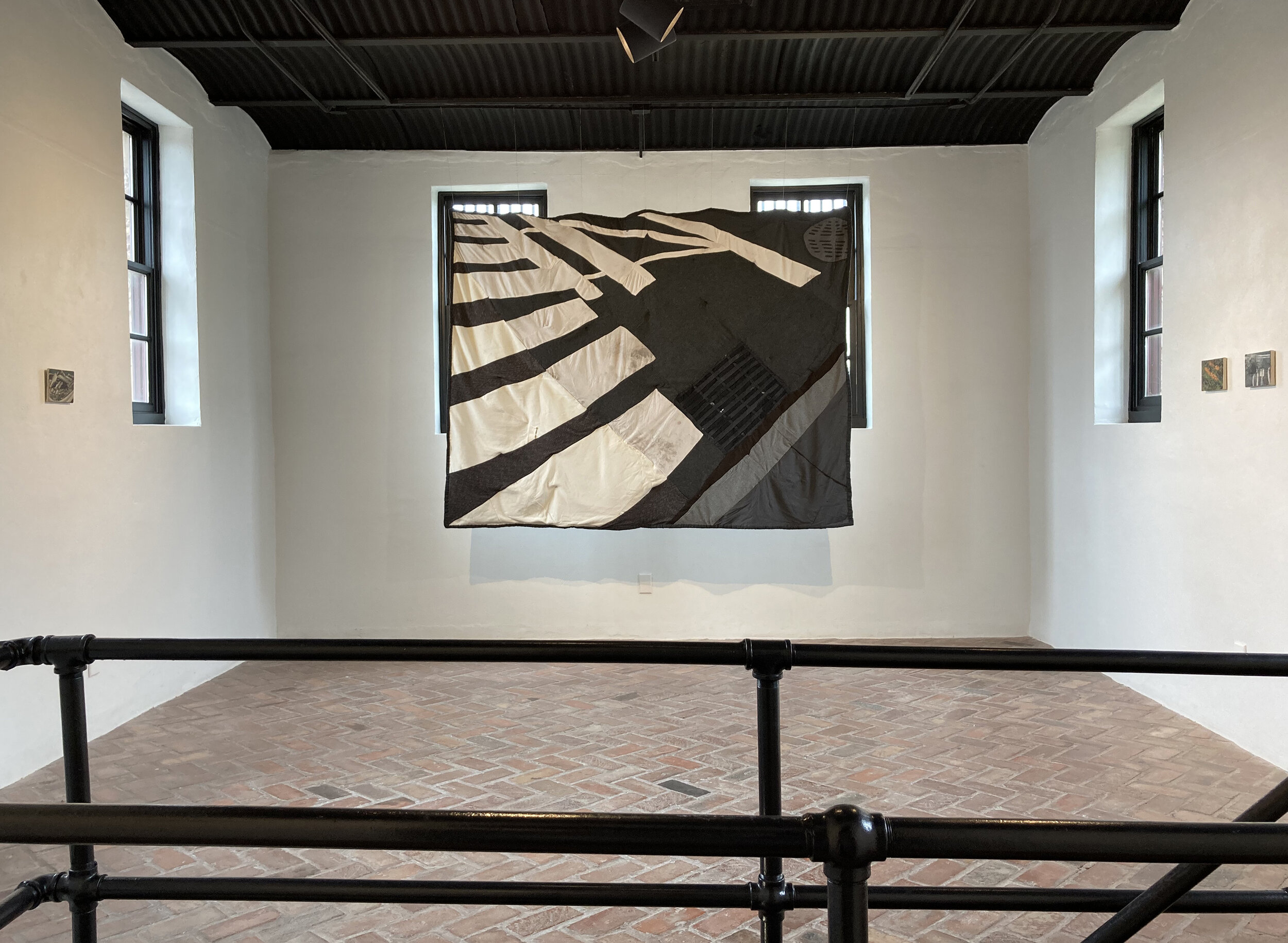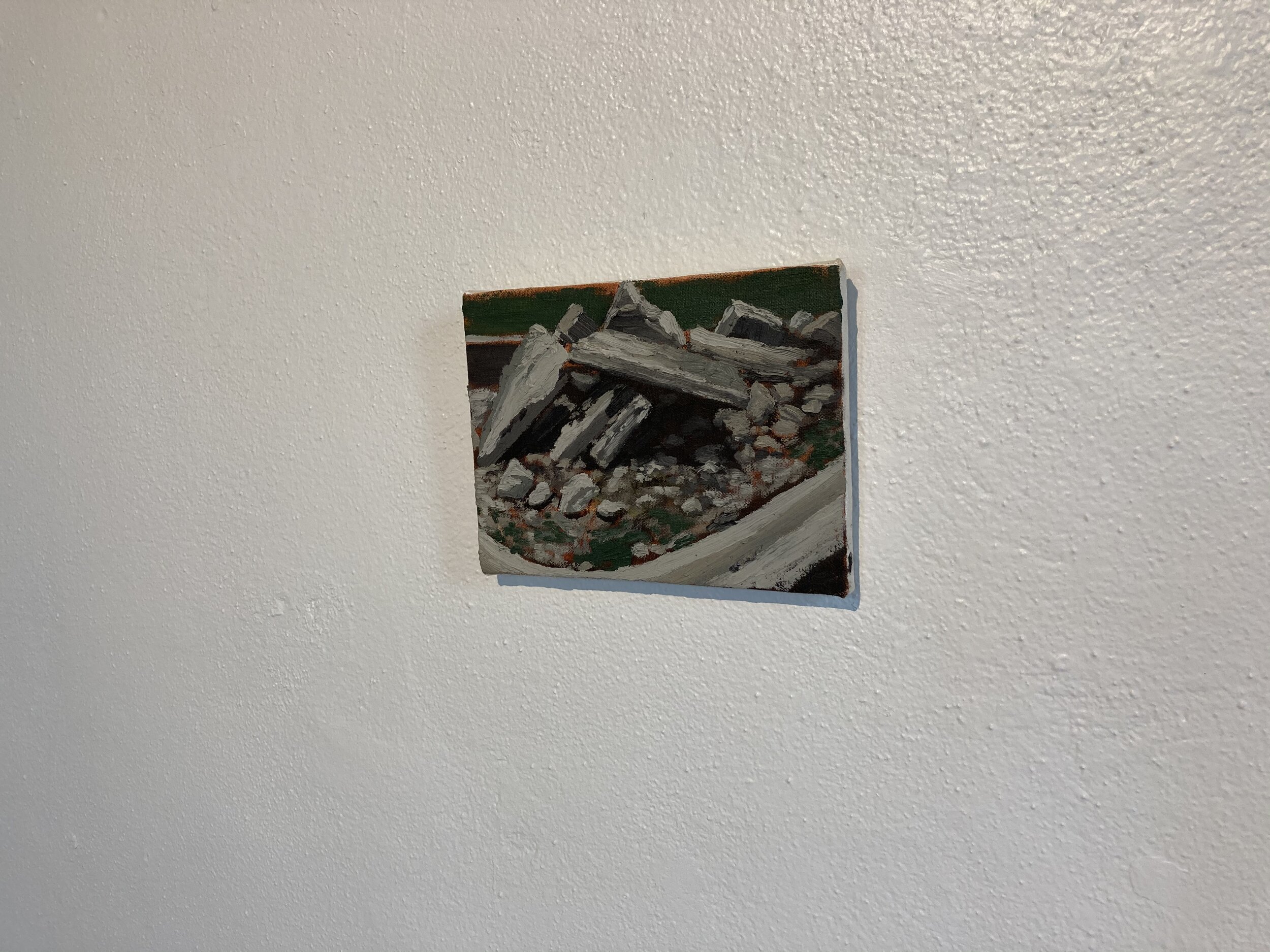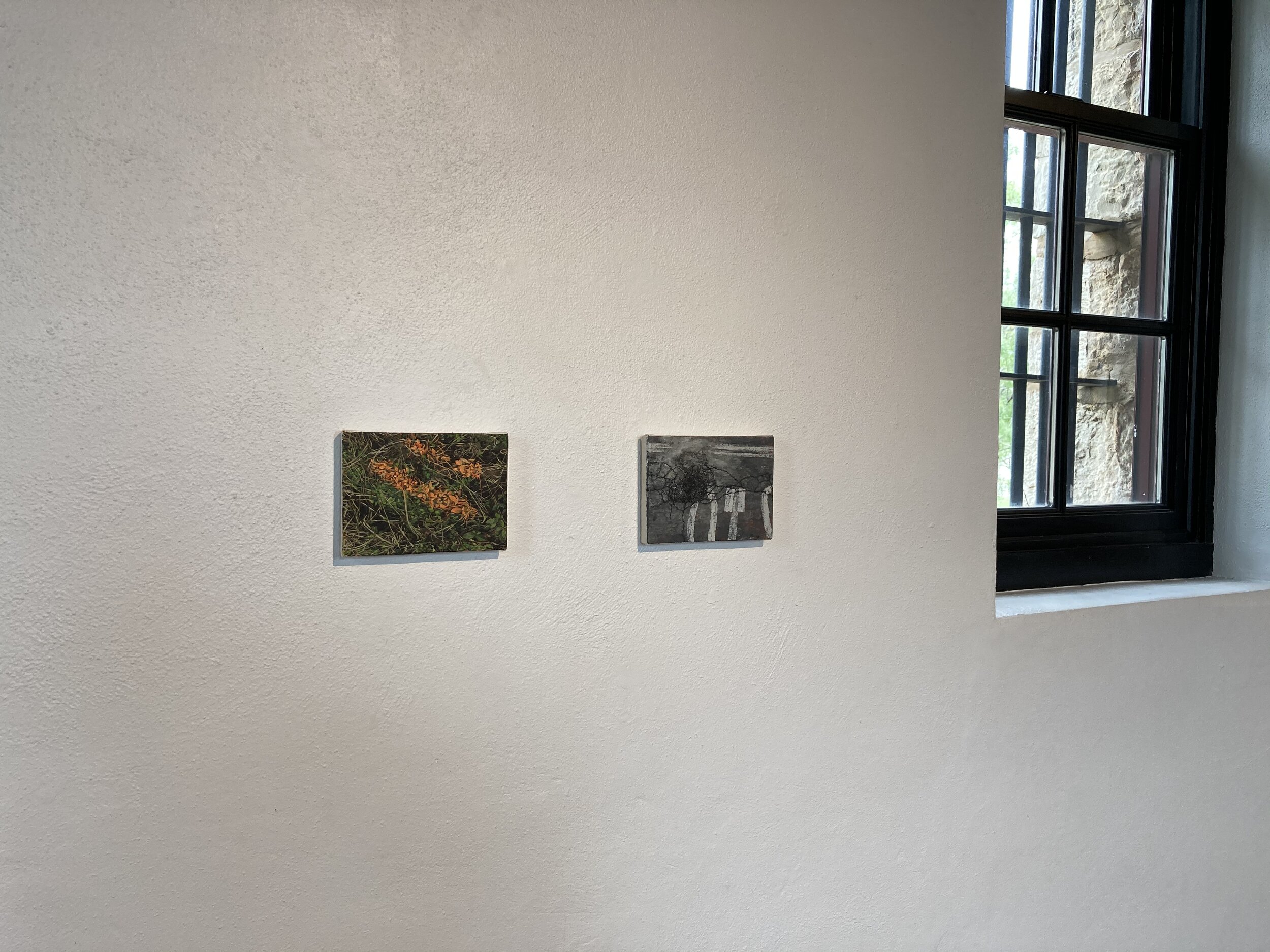Charis Ammon recognizes that she inherited a paved world. In her acceptance of this world, coupled with recently living in New York and prior to that Houston, she strives to discern beauty in this “concrete quilt” of a constructed environment. Based on her observations, her intimate paintings serve as more than just documentation of cracked or upheaved concrete, piles of debris, and records of never-ending repair. For Ammon, these observations and resulting works serve as metaphorical parallels to human psychological and physical behavior.
Much like the physical world, we construct our own realities and physical lives that are fallible and destined for damage or breakage, sometimes by no fault of our own. We, too, are constantly in a state of repair.
For the Cell Series, Ammon will present her paintings along with new quilted works. Though a very different approach to image making, the connections should be obvious.
The 2020 Cell Series is generously supported by the National Endowment for the Arts and the McGinnis Family Fund of Communities Foundation of Texas. Additional funding from Susie & Joe Clack, Jenny & Rob Dupree, Jon Rex Jones, Amy & Patrick Kelly, and Kathy Webster in memory of Charles H. Webster.
CHARIS AMMON, Beneath, 2020, oil on canvas, 5 x 7 in. Courtesy of the artist and Inman Gallery, Houston.
Patrick Kelly, OJAC Executive Director and Curator, email interview with Charis Ammon. (Aug-Sept 2020)
PK: In your artist’s statement you say, “I inherited a paved world.” With that statement and looking at your work it appears you may have spent a considerable part of your life living in large urban areas. Is this true?
CA: I grew up in Farmers Branch which is part of greater Dallas—that kind of name probably evokes pastoral views, but it was a fairly regular city neighborhood. I grew up biking to 7-Eleven for candies and Icees with my sister and friends. So, in some ways, I guess I was always interacting with concrete—biking or rollerblading, watching my brothers skateboard. Living in Texas, we are so dependent on vehicles. It seems hard to get around with just your own peddling, especially when that summer heat hits the road.
As a young adult, I’ve started to recognize just how much time can be consumed by driving. While I love that roadways mean access to people, food, adventures, and jobs, I also feel a sadness by how much of the wild growth of the earth has been painted over by concrete. I guess Dallas is fairly urban. I’ve now lived in Austin and Houston, TX and Brooklyn and Queens, NY. While in Houston, I managed to live where I could bike to work and grad school. That really began my focus on concrete. On my long bike rides, the concrete became many things while I passed construction sites, avoided pot holes, saw tent cities of homeless communities, but barely any pedestrians. Concrete started to become a privilege and a problem in my mind. I began considering the city as a concrete quilt, a blanketed area of earth.
PK: Can you describe how this ubiquitous imagery was eventually incorporated into your art practice?
CA: I think this all began when faced with some hard realities in my life. While pain is something everyone knows, my life looked so different from my peers, making me feel isolated from shared experiences. I began to recognize how every surface is impacted by struggle.
Back in 2014 or so, I began painting objects from my home—sinks, ovens, ceiling fans, etc. Each painting was a shaped canvas, cutting the object out of its environment completely, so all context is lost. I thought about the utilitarian object being cut out of its useful place—laying somewhat personified as a figure on the wall. A few years later, I recognized that I saw them as the “witnesses” to hardships that the people around me could not know fully. From then, I continued to see how medial spaces are filled with our memories and intimate thoughts.
In 2018, I had a show of paintings at Inman Gallery, mostly images of sidewalks and underpasses. I thought these spaces held both public and private mind. I consider how going on walks is often with close friends or partners or alone—what is exchanged is a meeting of minds, an intimacy.
I often enjoy imagining how many people lived in the houses and apartments I’ve rented. How many memories have fragments of these homes—minds all over that hold these spaces.
I believe with common objects and surfaces, there’s room for a collective experience. We all engage with these spaces. We all carry a story, and these everyday spaces hold those stories as we hold those spaces.
PK: That is a thoughtful answer. I pose a version of this question to many artists; but, do you concern yourself with the fact that a viewer may not be privy to these motivations when they view the work?
CA: I don’t worry too much about a varying degree of interpretation. We all come from different environments, so I believe it is inevitable to have many perspectives. I consider the ubiquitous subject matter fertile ground for people to bring their own associations to the artwork.
I believe my work has a quiet anxiety or energetic stillness, meaning while there is no action existing in the work, a tense energy remains by something left behind. Take the quilt pieces for example: a soft blanket with an image of concrete. There’s a splicing of worlds there. Blankets evoke rest, quiet, and intimacy while roads evoke traffic noise, urban environment, avoiding cars, etc. As the artist, I ruminate on ideas of mending and urban deterioration, on histories, on pipes under the roads, on the conditions of road workers, on surface texture and light and so on. But I spend hours with my work and I write alongside my art practice. So, with all that comes many thoughts that I can’t expect everyone to adopt when standing in front of the work for a minute.
Communication is a wild thing; we will never extract all of our mind and fit it into another. But there’s a beauty in that—there will always be more to learn and more to see with each other.
PK: Your paintings are very much about the surface. They don’t fall into the Lucian Freud realm but there is a presence of paint you’re not trying to disguise. Do you find yourself having to consciously control that surface in order to not allow the image to be secondary?
CA: Paint is like working with mud. I see an opportunity to sculpt the surface. I sense that the surface of the canvas gives a heightened sense of the environment depicted. To me, there is no battle between paint and image, but rather a dance. Part of the paint thickness is spatial and part is for emphasis. It’s quite possible that I’ve gotten so deep into this play between texture and environment that my mind forgot where it began. I feel like these decisions are typically instinctual or intuitive. What I can remember when I first began painting is that the surface of the objects I painted were extremely important to me, reporting spills or dirt or scratches. The residue speaks about the history and treatment of that space.
PK: The intimate size of some of your canvases, the surface, and other subtle treatments make them feel like small sculptures—things that you want to hold, not place on the wall and propose being a “window to the world.” Not a real question here, just an observation; but do you feel the same?
CA: I definitely consider the different tones of my painting sizes have implications like that! My large-scale canvases are like me taking you on a walk, placing you into a space. But the small-scale paintings are like I’ve picked up a little stone and shared it with you. I picture it like I’m cupping something small in my hand and passing it on, like a secret or something delicate. To me, the small paintings have an intimacy that larger works do not. In a sense, I can see the tiny paintings as little objects also. So yes, I believe I agree. There’s something physical about them, not just a “window” experience.
